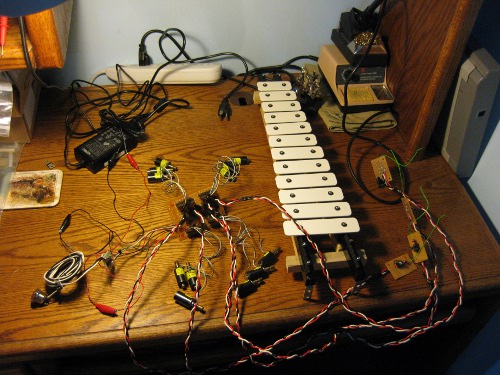I ran into an ad for development boards from XMOS the other day, and, being generally curious about unusual little processors, read up on them. The architecture they are using sounds like a really good idea to me, and I hope it’s as well executed as it is clever. Some of the cool stuff:
Programmable hardware – they call it “Software Defined Silicon”, it appears to be FPGA-like programmable switching setups between the cores, and some programmable features in the IO blocks.
Static scheduling – This is my bet for the way to solve the memory latency problem that continues to be my favorite candidate for “the next big problem in computing”. Caches and parallelism can only hide so much, and caches are responsible more than their share of uglyness.
LLVM-based tools- I’ve been working with LLVM for LARs, and there is a lot of similarity to the designs. I’m pretty well convinced now that LLVM is a Good Thing and the programming environment they built with it sounds promising; it appears to be C, extended with features to better support thread concurrency and the programmable I/O stuff.
The biggest worry is they don’t seem to actually have their chips in any high profile devices, which may just mean they haven’t been around long enough, and may mean there is some hidden problem with their products that I haven’t caught on to yet.
I don’t have enough free time and energy to think its a good idea to drop $100+ on a dev kit which will sit unused on my shelf “until I have time”, nor do I have a project for which it would be appropriate, but I’d love to to sit down and play with one of their dev kits (the little credit-card boards are cool, but the one with the QVGA touchscreen is way cooler…) and see if it really is as good as it looks (One of the many cool project ideas I doubt I’ll ever get to: I’d love to try to port a conventional(ish) OS to these things in a way that actually took advantage of the architecture (I’m thinking tricks with a microkernel across threads), both for the porting experience and because it would be a good (predicted) future of parallel programming playground. There is a review of the fancy kit with the screen above, and it sounds like the software tools (at least at the time of the review) and documentation are still a little rough, but they seem to agree its a promising idea, and do note that XMOS seemed to be aware of the issues and showed signs of moving to solve them. Definitely a product to watch.





